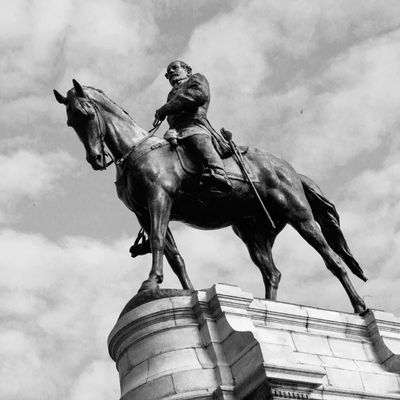
Since a white supremacist massacred nine African-Americans at the Mother Emanuel church in Charleston, South Carolina, in June of 2015, 113 Confederate monuments have been renamed or removed from towns across the country. Of these, 73 have been removed in the past year, in the wake of the violent “Unite the Right” rally in Charlottesville, where white nationalists gathered to oppose the removal of a statue of Confederate general Robert E. Lee.
And yet, when the Southern Poverty Law Center (SPLC) released its catalogue of Confederate symbols on public land in the United States earlier this summer, the number of Confederate monuments had increased — from 1,503 in 2016 to 1,740 in 2018. If these monuments are being removed, how does the total number keep growing?
As USA Today noted on Monday, the issue is not (entirely) that new Confederate statues are being built, but that the increased national attention on the issue has led people to report previously unknown Confederate sites to the SPLC. In other words: “Confederate sites, most established long ago, are being discovered faster than they’re being removed.”
There is, for example, a Jefferson Davis Highway marker in Las Cruces, New Mexico, and Winnie Davis Hall at the University of Georgia that’s named for Davis’s daughter.
And certainly, new public tributes to the Confederacy have been erected in recent years as well — at least 44 since 2000.
The new report highlights just how vast the scope of the problem is, and how much more work there is left to do. The monuments and symbols recorded by the SPLC include: “105 public schools named for Robert E. Lee, Jefferson Davis, or other Confederate icons,” “80 counties and cities named for Confederates,” and “9 observed state holidays in five states.” Many of these sites were established during the period when states were enacting Jim Crow laws in the early 1900s, and later in the 1950s and ’60s, as a backlash to the growing civil rights movement.
Removing them is not cheap or easy. According to USA Today, one middle school in Roanoke, Virginia, estimated that, with the cost of a new basketball court floor, uniforms, stationery, etc., it would cost them $170,000 to change their name from Stonewall Jackson Middle School. And there still remains a vocal portion of the population that believes to remove or rename these public monuments is to “erase history.”
“We’ve seen a remarkable effort to remove Confederate monuments from the public square, yet the impact has been limited by a strong backlash among many white Southerners who still cling to the myth of the ‘Lost Cause’ and the revisionist history that these monuments represent,” Heidi Beirich, director of the SPLC’s Intelligence Project said in a statement. “The number of public symbols that continue to be found is a testament to how deeply rooted the Lost Cause is in modern American society, and should serve as a call to action for how far we have left to go in the struggle for racial reconciliation and equality.”
Read the SPLC’s full report here.





